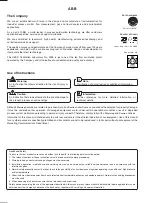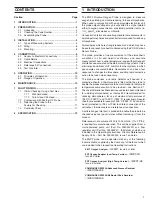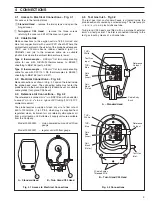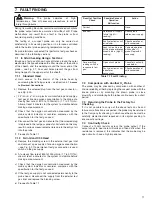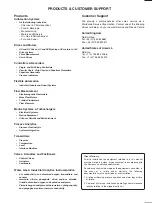
11
s
a
G
t
s
e
T
f
o
t
l
u
s
e
R
k
c
e
h
C
f
o
e
s
u
a
C
e
l
b
i
s
s
o
P
n
o
i
t
a
r
e
p
O
n
o
i
t
c
n
u
f
l
a
M
n
o
i
t
c
A
.
t
c
e
r
r
o
C
.
e
n
o
N
.
t
c
e
r
r
o
c
n
I
y
l
p
p
u
s
r
i
a
e
c
n
e
r
e
f
e
R
O
h
g
i
h
(
e
r
u
li
a
f
2
.
)
g
n
i
d
a
e
r
e
b
o
r
p
k
c
e
h
C
.
y
l
p
p
u
s
r
i
a
e
c
n
e
r
e
f
e
r
t
i
n
u
s
c
i
n
o
r
t
c
e
l
e
y
t
l
u
a
F
.
r
o
t
a
c
i
d
n
i
r
o
f
o
n
o
i
t
a
r
e
p
o
k
c
e
h
C
.
d
e
n
r
e
c
n
o
c
s
t
i
n
u
e
b
u
t
a
i
n
o
c
r
i
z
n
i
k
a
e
L
n
e
k
o
r
b
r
o
e
b
o
r
p
n
i
h
t
i
w
O
h
g
i
h
(
e
b
u
t
a
i
n
o
c
r
i
z
2
.
)
g
n
i
d
a
e
r
n
o
i
t
a
r
e
p
o
e
r
a
p
m
o
C
O
r
e
h
t
o
n
a
h
t
i
w
2
f
i
e
c
a
l
p
e
R
.
e
b
o
r
p
.
y
r
a
s
s
e
c
e
n
g
n
i
t
f
i
r
d
r
o
o
r
e
Z
o
n
h
t
i
w
s
g
n
i
d
a
e
r
t
s
e
t
o
t
e
s
n
o
p
s
e
r
.
s
a
g
.
e
b
o
r
p
t
i
u
c
r
i
c
n
e
p
O
y
t
i
u
n
i
t
n
o
c
r
o
f
k
c
e
h
C
.
w
o
l
e
b
e
e
s
–
t
i
n
u
s
c
i
n
o
r
t
c
e
l
e
y
t
l
u
a
F
r
o
r
o
t
a
c
i
d
n
i
.
s
n
o
i
t
c
e
n
n
o
c
f
o
n
o
i
t
a
r
e
p
o
k
c
e
h
C
.
d
e
n
r
e
c
n
o
c
s
t
i
n
u
7
FAULT FINDING
Warning.
The probe operates at high
temperatures. Take all necessary precautions to avoid
injury through burns.
During its working life under normal recommended conditions
the probe output remains accurate and without drift. Probe
malfunctions can result from a fault in the probe or from
incorrect operating conditions.
The testing of a suspect probe can only be carried out
satisfactorily in its working position or in a furnace controlled
within the normal probe operating temperature range.
If a probe failure is suspected, first perform a test gas check as
described in the following sections.
7.1
In Situ Checking Using a Test Gas
Introduce a test gas of known concentration around the outer
electrode in the space between the filter washer, at the bottom
of the sheath, and the wadding around the lower end of the
probe – see Fig. 2.1. Four vent holes prevent the gas from
being trapped in the upper part of the sheath.
7.1.1
Standard Head
a) Gain access to the interior of the probe head by
unscrewing the lid fixing screws – see Section 4.1,
Access
to Electrical Connections
.
b) Remove the screwed plug from the test gas connector –
see Fig. 4.2A.
c) Fit
1
/
4
in i.d. x
3
/
8
in o.d. plastic or similar tubing and supply a
test gas of known oxygen concentration to the probe at a
steady flow rate of 800 to 1000ml/min (1.7 to 2.1ft
3
/hr).
Allow at least 5 minutes for the system to stabilize before
making a measurement.
d) Check that the oxygen concentration measured by the
probe system indicator or recorder, compares with the
specification for the test gas used.
e) Disconnect the test gas and ensure that the screwed plug
is replaced in the test gas connector. Failure to do this may
result in serious measurement errors due to the entry of air
into the probe.
f)
Proceed to Table 7.1.
7.1.2
Twin Gland C95 Head
a) Remove the blanking screw in the external test gas inlet
and connect a gas supply of known oxygen concentration
– see Fig. 4.2. If a permanent test gas connection is used,
switch on the gas supply.
b) At a steady flow rate of 800 to 1000ml/min (1.7 to 2.1ft
3
/hr),
allow at least 5 minutes for the system to stabilize before
making a measurement.
c) Check that the oxygen concentration measured by the
probe system indicator or recorder, compares with the
specification for the test gas used.
d) If the test gas supply is not connected permanently to the
probe head, disconnect the supply from the external test
gas inlet and replace the blanking screw.
e) Proceed to Table 7.1.
7.2
Comparison with Another O
2
Probe
The probe may be checked by comparison with another of
known reliability, either by replacing the suspect probe with the
known probe or by mounting the known probe in close
proximity and monitoring both probes continuously for a short
period.
7.3
Returning the Probe to the Factory for
Checking
If it is not possible to carry out the above tests on site and
failure or malfunction is suspected, the probe may be returned
to the Company for checking, in which case the probe must be
carefully dismantled and repacked in its original packing to
ensure safe carriage.
7.4
Continuity Check
Connect a 100k
Ω
resistor across the probe output. If the
output drops to near zero millivolts and then drifts when the
resistance is removed, this indicates that the probe may be
open circuit or have a high impedance.
Table 7.1 Fault Finding


